
|
A Bit of Background
When Lord Justin informed me about an event open to the public being held at Fort Knox in Prospect, Maine I was definitely intrigued on several fronts. One, just to check it out and observe the period clothing and 'goings on' as a spectator – I’d never really done this because any time I journeyed to an event I was always a participant and one of the guys that was always asked the usual, generally ridiculous questions re-enactors are often asked, i.e., in Gettysburg on a scorching July afternoon - ‘Is it hot in that wool uniform?’, etc., although many people were well versed on the history of the period and presented excellent questions and comments. Secondly, with my interest in photography I thought it would be intriguing or at least out of the ordinary to image some of the proceedings like fencing, heavy weapons combat, the folks in period dress and the attending crowd. I did what was required to clear my schedule as the weekend date approached so I could take the time for the drive up the coast.
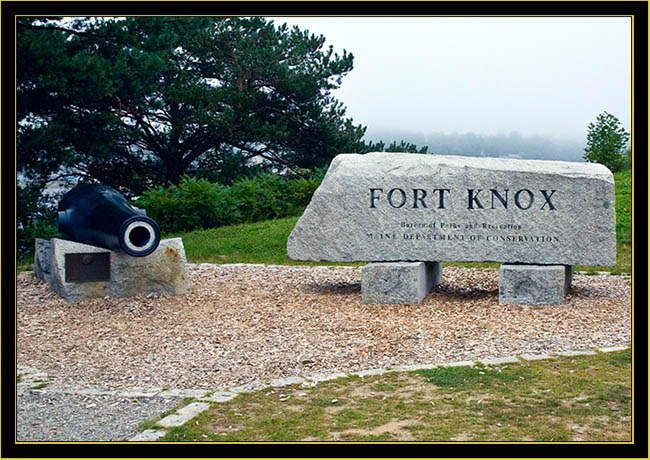
|
Located on the west bank of the Penobscot River in Prospect, Maine and strategically located on the narrows of the Penobscot River to protect the river valley, Fort Knox was constructed in the period from 1844-1869. This construction was part of an overall national effort commenced to protect interior waterways and harbors in the event of war. Fort Knox was deemed necessary to protect the Penobscot River valley against possible future British naval incursion with an eye on Canada after various northeast border disputes. Research the period after the American Revolution and the War of 1812 and you will be made aware of just how pesky the British were to our country afterwards. Although garrisoned at various times during the American Civil War and Spanish American War, the facility never experienced combat. I would comment that with the commencement of hostilities of the American Civil War and the advent of new and powerful rifled ordnance the days of the granite forts passed quickly enough and produced the end of an era. To learn much more about this interesting facility, visit the Fort Knox State Historic Site & Friends of Fort Knox websites. |
Henry Knox (1750-1806) was George Washington’s Chief of Artillery during the American Revolution and later the first Secretary of War of the United States under Washington’s Presidency. In
pre-revolutionary times he was an amiable bookseller in Boston and a self-educated individual who among other pursuits, made a study of the military arts. Knox married Lucy Flucker (1756-1824),
the daughter of a particularly vehement Tory father in 1774. Washington elevated Knox to this wartime post of honor after Knox retrieved the artillery from Fort Ticonderoga, captured from the
British by a daring enterprise in May 1775 by Vermonter Ethan Allen and Colonel Benedict Arnold. Removal and transport of this artillery was a significant achievement and a marvel of planning
and execution. With the heavy weapons placed on high ground, the Continentals expelled the British from Boston at the Battle of Dorchester Heights (March 2-3, 1776). With Boston Harbor untenable and the forced
withdrawal of the British, Lucy had to make a choice of allegiances. Lucy’s parents left with the British ships – this was the last she ever saw of them. Henry Knox went on to a distinguished
military and civil career with his new country, settling in Thomaston, Maine, still a part of Massachusetts at that time. It is appropriate that Fort Knox be named after such an American patriot...
|
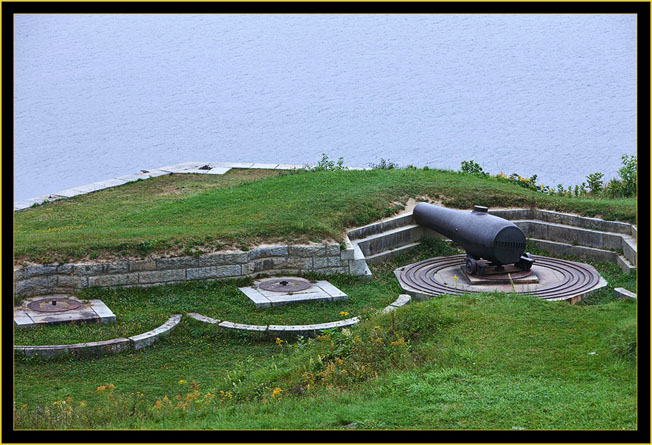
|
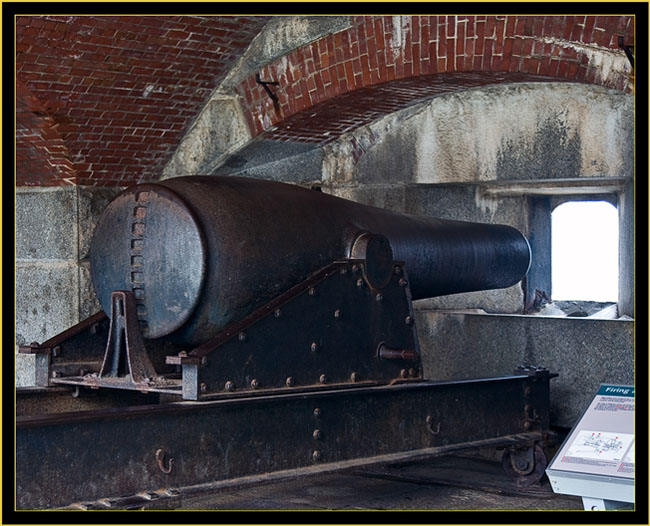
|
Rodman guns were American Civil War-era smoothbore Columbiads designed by Thomas Jackson Rodman, (1815-1871) West Point class of 1841. These weapons were the primary ordnance employed at Fort Knox. Rodman developed new technologies allowing a hollow casting method as
opposed to the traditional solid cast that resulted in production of cast iron ordinance that was much stronger than preceding weapons. Upon adoption of his methods by the U.S. government
in 1859 Rodman was assigned command of the U.S. Arsenal in Watertown, Massachusetts. Promoted to Lieutenant Colonel in 1867 and later placed in command of the Rock Island Arsenal he died at
his post in 1871, his health broken from continuous years of hard service. The heavy Rodman guns were intended to be mounted in seacoast fortifications, were built in 8, 10, 13, 15 & 20-inch
bores and designed to broadcast both shot and shell. The guns were identical in design with a curving soda bottle shape and differed only in bore size.
10-inch Rodman Gun & Carriage |
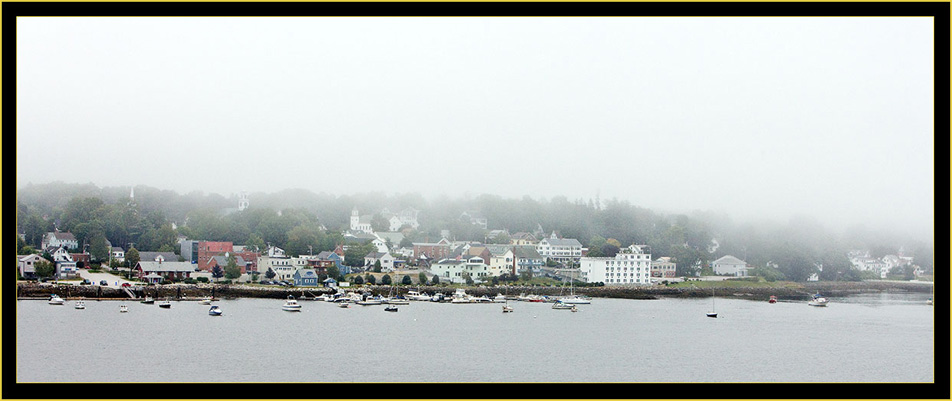
|
|
It was foggy ride up the coast from Portland. I’d planned to be in Prospect about the time the event doors opened, 0900 hours, but ended up doing a few things at home before leaving, delaying my departure. The
drive time was stretched out a bit by traffic and later fog and it took nearly three hours to arrive. When I made the turn towards the fort entrance I pulled over by the bridges, old and new and checked the
view. The lower bridge cables were in the clear moving into an envelope of fog - a compelling scene.
I thought seriously about setting up a tripod to capture the moment but as I was running late, did not.
I’d been to Fort Knox on multiple occasions, some pursuant to Civil War re-enacting endeavors. I recall at one time there was a discussion about a group ‘adopting’ the fort as well as Fort Gorges in Casco Bay at the entrance of Portland Harbor. I suppose nothing came of either for varied reasons. In any event, it didn’t take much prompting for me to plan a return visit – this facility is well worth the time and effort to investigate. The planned Medieval Tournament with all the color and pageantry appeared to be a wonderful event to enjoy at Fort Knox. If you’ve never visited the Fort Knox State Historic Site I urge you to gather up the family to make the effort.
|

|
Stepping Back in Time...
Seventh Annual Medieval Tournament Activity Map - Fort Knox State Historic Site

|
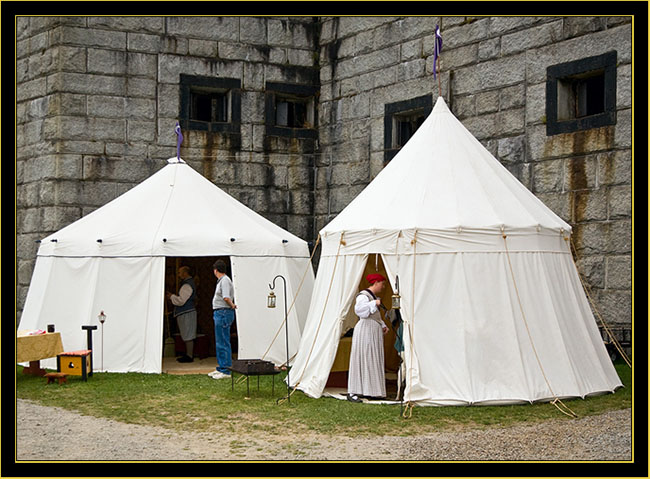
|
The Seventh Annual Medieval Tournament was sponsored by the Friends of Fort Knox and the Society for Creative Anachronism’s Shire of Endewearde,
based out of Central and Down East, Maine. This Shire is a part of the East Kingdom, which I found covers an extended area - check out the web link, it's well worth
investigating further... Other Maine related groups of the SCA’s East Kingdom include the
Province of Malagentia – Southern and Coastal Maine
including Portland; the Shire of Smithwick, an embryonic shire in Northern Maine and the Shire of Hadrian’s Keep, a proposed shire in Mid-coast Maine. I’m not certain about
representation of these various shires at the event but I believe all were well represented besides SCA folks ‘from away’. I talked with one lady who stated she lived in the
Canadian Province of New Brunswick (also part of the East Kingdom) and traveled south for this gathering.
After I waited the few minutes to pay the entrance fee and park my vehicle I thought about what camera equipment to carry into the fort. I always prefer to shoot from a tripod but thought this event may not lend itself to this pursuit and didn’t know how active the spectators may be as I was carrying one around. Rather than carry a camera bag and additional gear, I decided to handhold and selected two cameras, the Canon EOS 1Ds Mark III with a EF 70~200mm f/2.8L IS lens and Canon EOS 5d with a 24~105mm f/4L IS lens. These were on shoulder straps so if I were using one the other would not interfere and both can be carried in this fashion. The lens choice provided enough reach plus the ability to go fairly wide if I wished to do so. All the photographs exhibited in this account where taken by these cameras. I shot over 600 images at this Fort Knox session in a matter of a few short hours. Many of these were sequential shots during the combat exhibitions; what is displayed here is a small sampling of the overall effort.Should anyone be interested in more information concerning my photographic choices in lenses, cameras & accessories please check out this article on my website, My Canon Photographic System. View of Haus Wanderstamm's Pavilions in front of the Fort's Granite Walls... |
Rapier Duels & Fencing Demonstrations - Outside the Granite Walls...
One of the first venues you’d come to when entering the fort grounds is the Fencing and Heavy List Field. This was located in a grassy, roped off area with a terrific view of the water
looking over at the Town of Bucksport. I stopped for a time, observed the proceedings & took a series of images.
At the Ready - Participant on the Fencing Field Canon 1DS/70~200mm f/2.8L lens at 100mm; 1/640 second at f/8, ISO 400
|
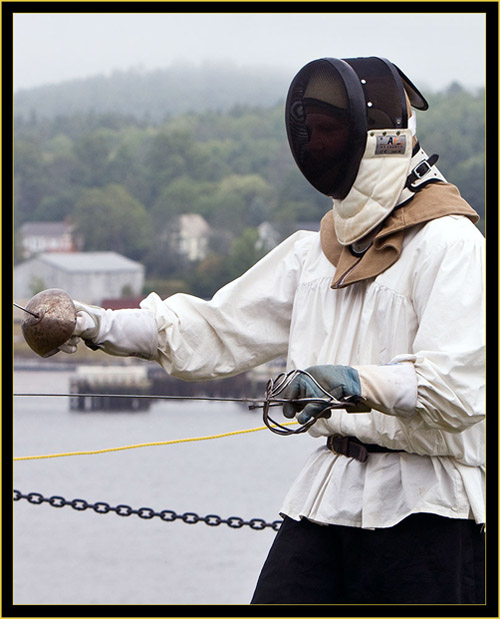
|
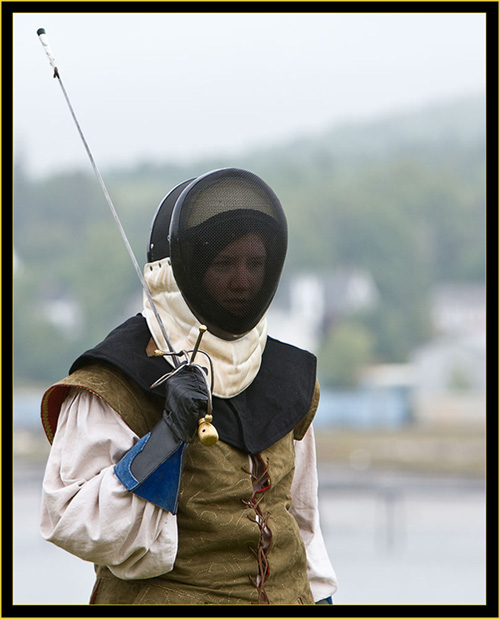
|
One of the aspects I’d learned about 19th Century clothing was that for the average working people – the bulk of our United States Antebellum population when the economy was primarily agriculturally based,
really hadn’t changed significantly since Colonial times. What clothes a farmer wore in the 1820’s or 30’s differed little from a farmer in the 1790 period. As I looked around at the assorted men, women
and children in period attire I recognized that much remained familiar. Some of the long coats I viewed on men differed little from Civil War era military dress – a few changes here and there but probably
not enough for the average tailor of the time to have to re-learn his or her skill set although I’m sure a study of available period materials would reveal much. This appeared to be true with the ladies
day dresses also. There were some clear medieval ‘fashion statements’ you wouldn’t view the average lady of means in 1850 America engaged upon but the basic dresses shared much in common.
On the Fencing FieldCanon 1DS/70~200mm f/2.8L lens at 200mm; 1/640 second at f/5.6, ISO 400 |
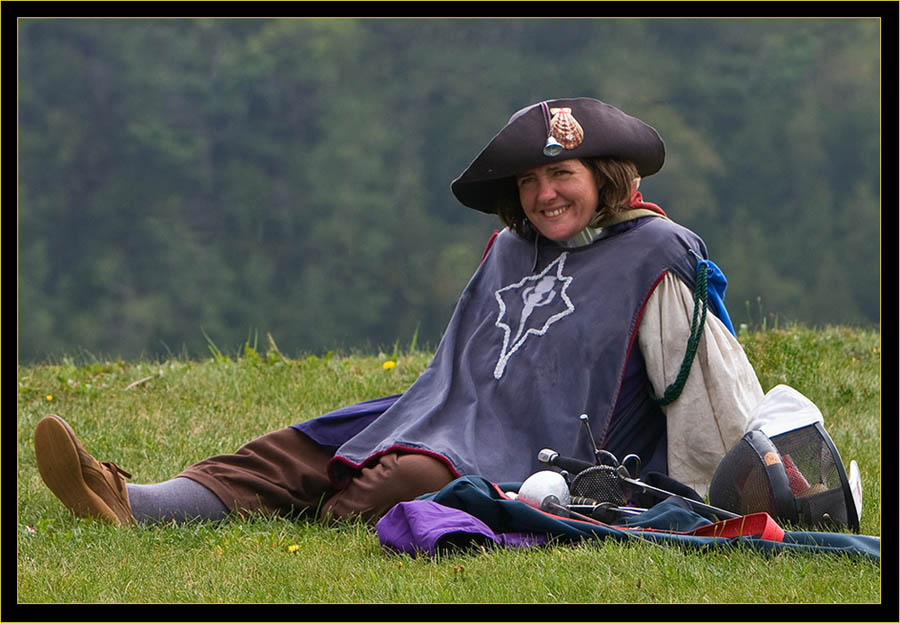
|
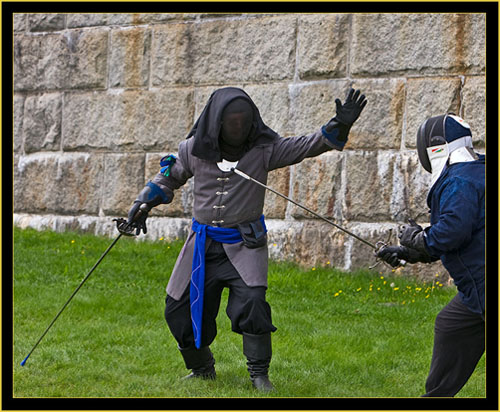
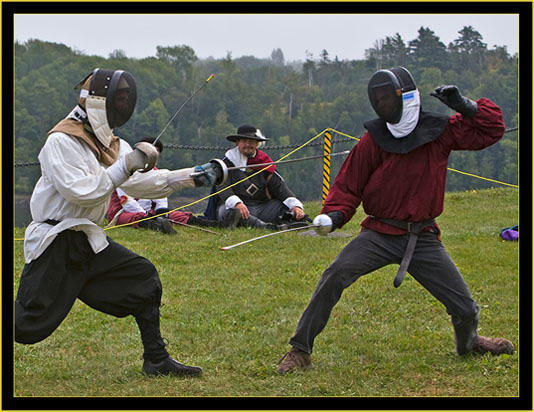
|
A short distance away before coming to the fort entrance there were some period tents set up with more fencing exhibitions underway. I viewed this activity for a time and took some photographs
as the participants engaged in combat.
|
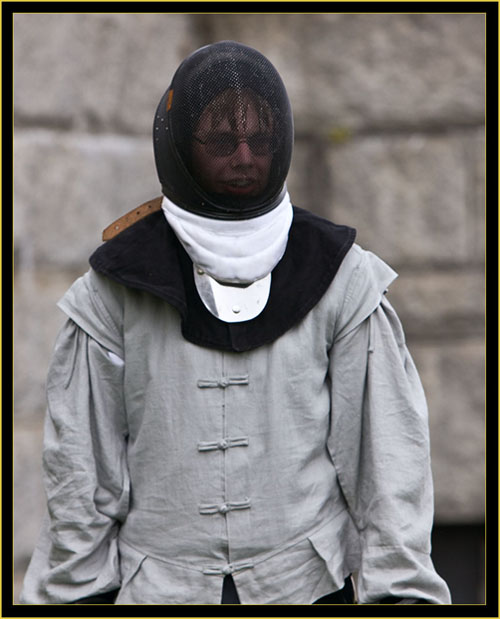
|
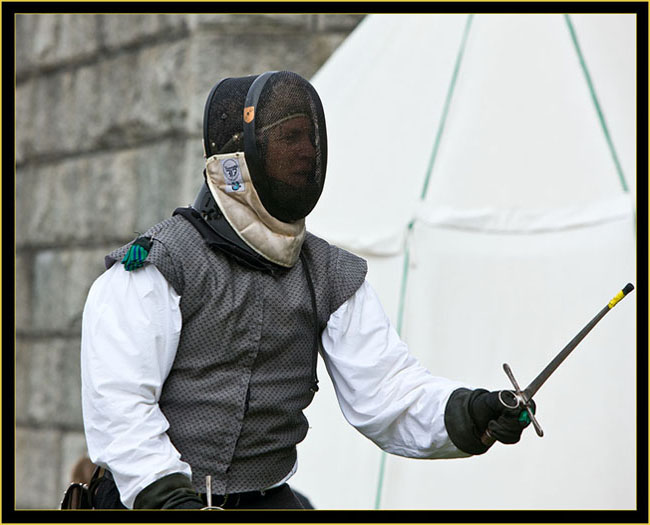
|
This image provides a fair view of the blunted weapon in the left hand of this fencer. As one can easily imagine, safety is a primary concern for both participants and spectators and the SCA has
strict protocols to be followed at both public and private gatherings.
The Opponent - ready to Engage...Canon 1DS/70~200mm f/2.8L lens at 200mm; 1/1000 second at f/7.1, ISO 400 |
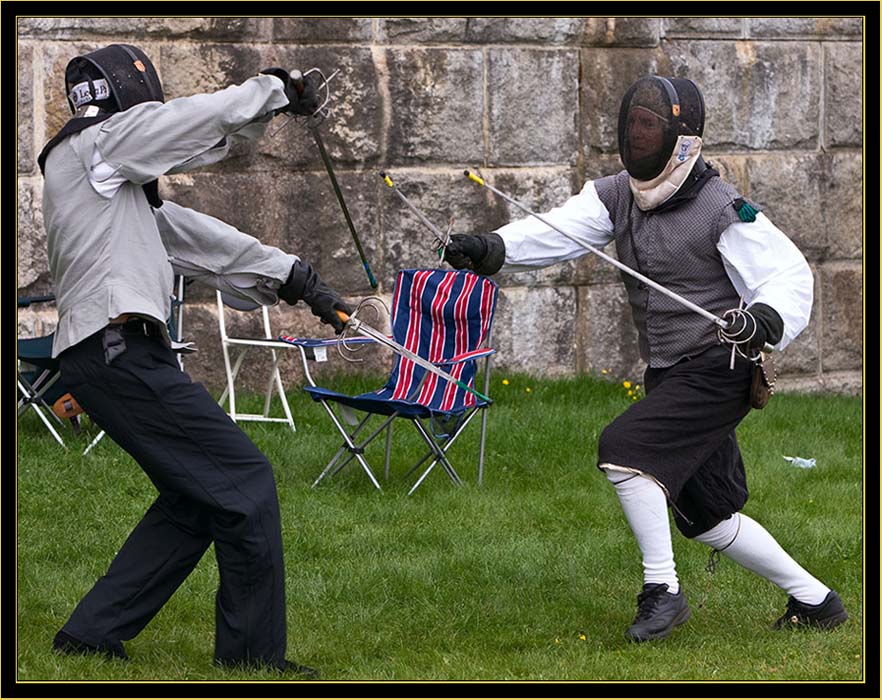
|
|
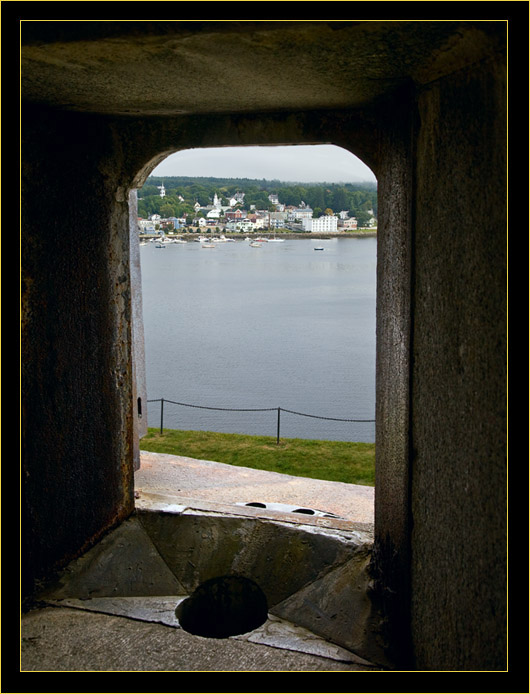
|
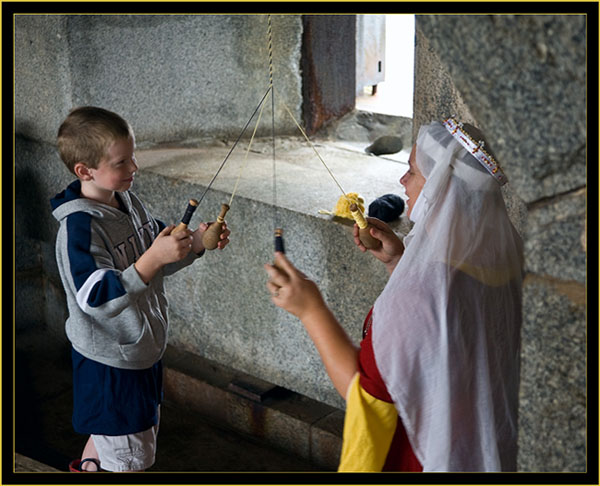
|
In the Arts & Science DisplaysCanon 5d/24~105mm f/4L lens at 67mm; 1/60 second at f/4, ISO 400 |
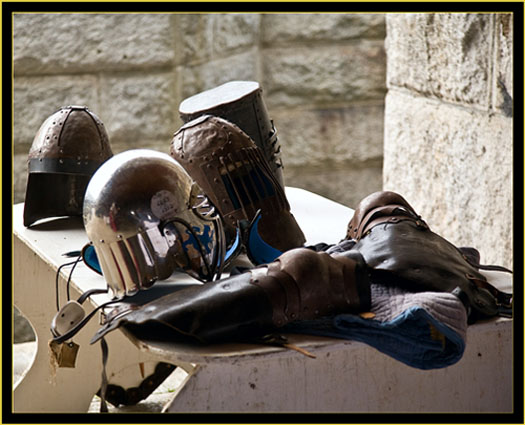

|
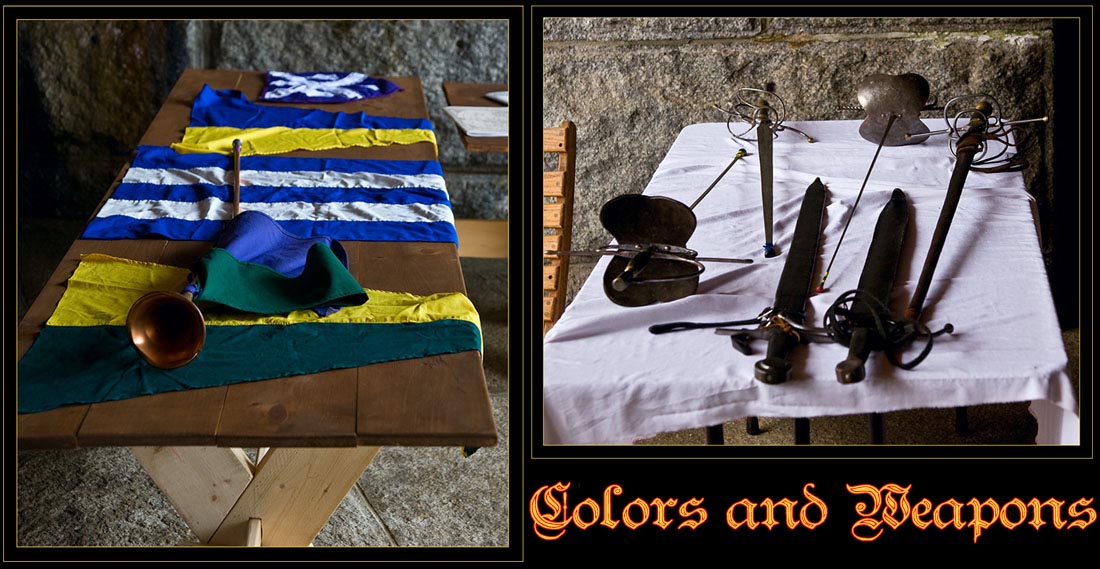
|
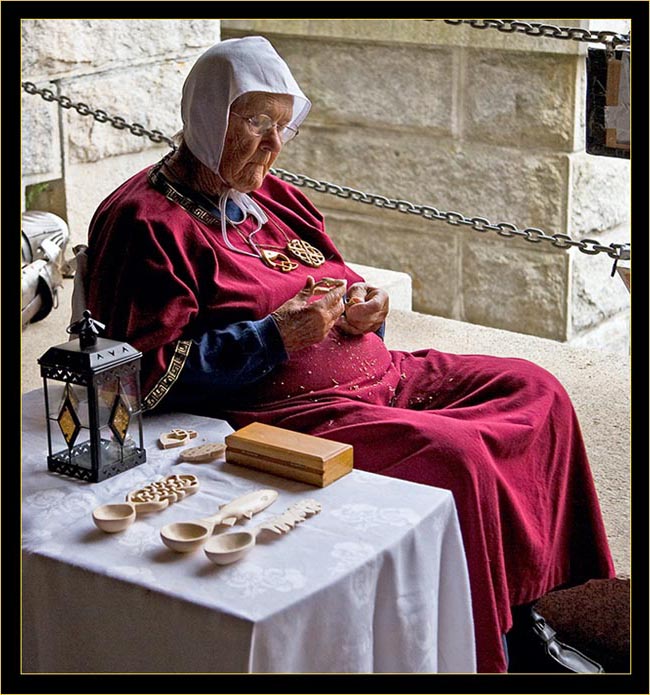
|
Whittling/Woodcarving Display...I watched this whittling operation for a time and was duly impressed with the work this woman was creating. It must require a great deal of skill and patience to do this intricate crafting… Check out the spoons on the table and the ornaments around her neck – fine work indeed! Canon 5d/24~105mm f/4L lens at 50mm; 1/800 second at f/4, ISO 400 |
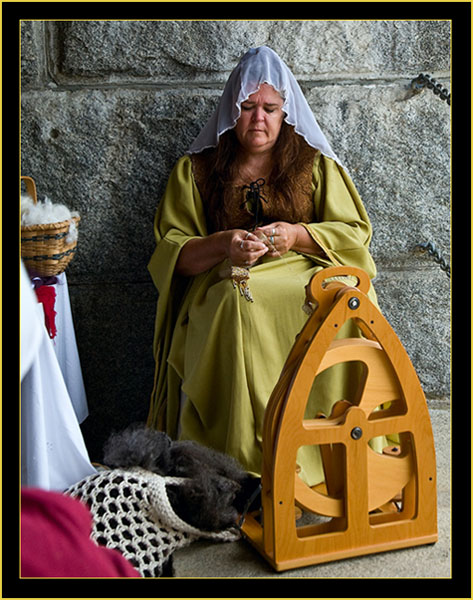
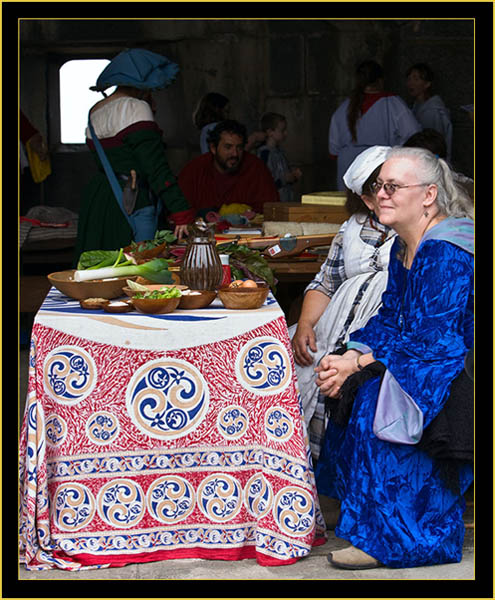
|
|
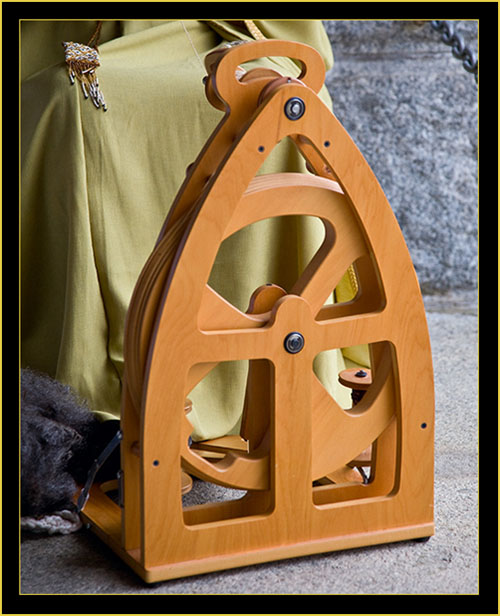
|

|
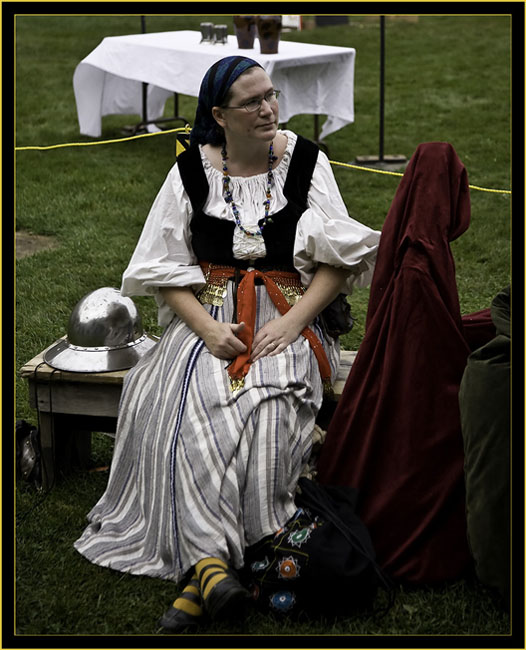
|
Medieval Wife Kicking Back & People Watching While Keeping an Eye on the Armor...Walking about and meeting the people of Medieval times was interesting. Some stayed completely immersed in period character; others were more lenient in this regard. I know that attending an event of this nature as a participant can be a lot of work and it starts long before you show up at the site. This was only a one-day gathering - I was impressed with the amount of materials displayed and the interest garnered both by the SCA folks and the general public. It looked like everyone was having a great time participants and spectators alike. I talked with the fine Lady viewed here briefly; she indicated she was from New Brunswick… Canon 5d/24~105mm f/4L lens at 70mm; 1/2000 second at f/4, ISO 400 |
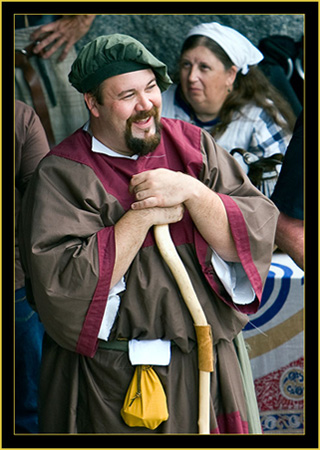
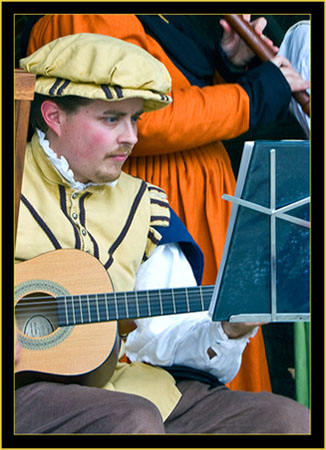
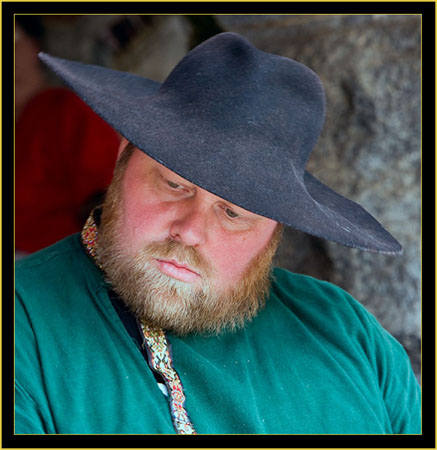
|
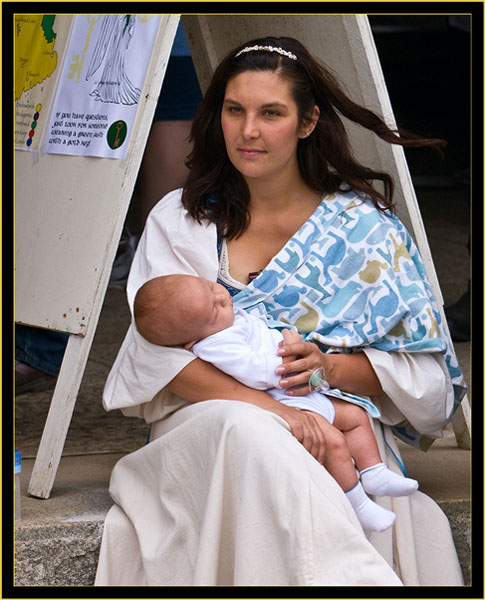
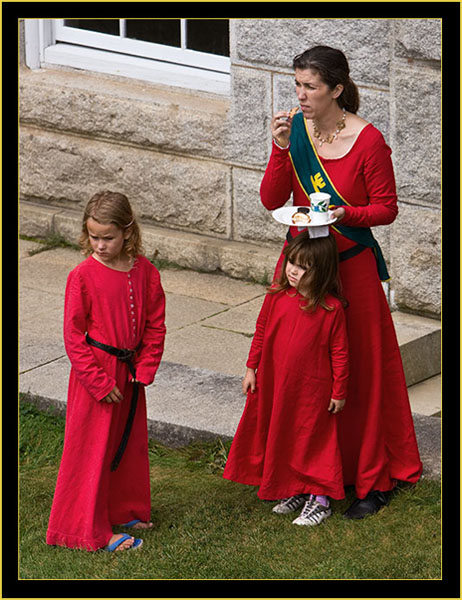
|
|
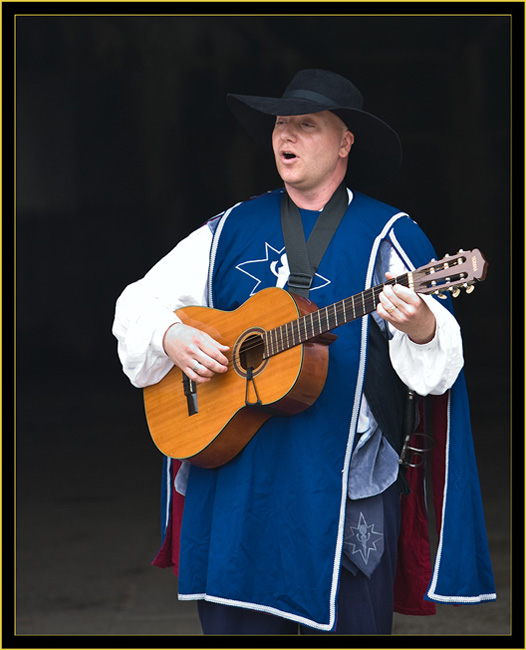
|
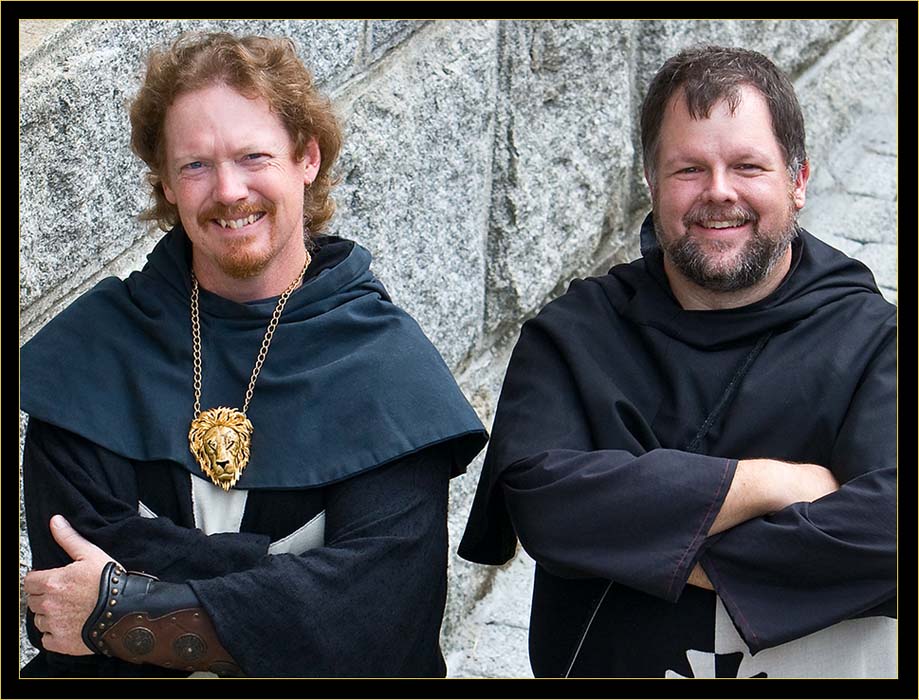
|
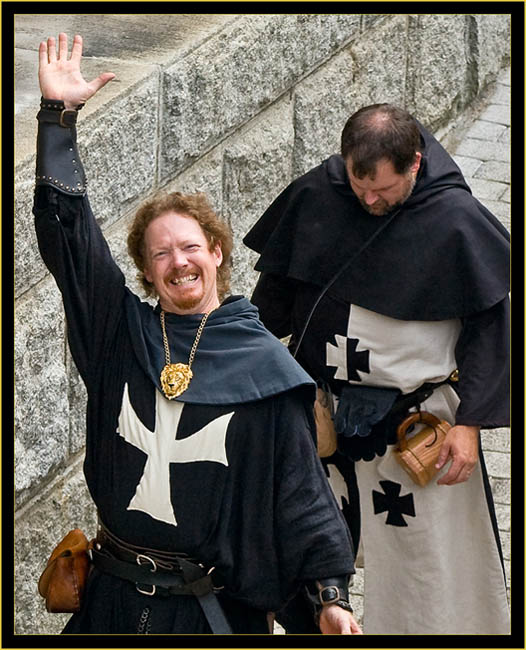
|
My Buds the Monks Hamming it Up...I talked to the fellows in the view at left and above on several occasions during my time at the Medieval Tournament and enjoyed doing so. When I inquired they indicated they were monks… I stated that from what I know of the period this is an excellent choice of professions – anybody involved with the wealth of the clergy had the ability to look out for themselves much better than the common folk. I’d recently taken a road trip and among other selections, had purchased a copy of William Manchester’s, ‘A World Lit Only by Fire: The Medieval Mind and the Renaissance: Portrait of an Age’ (© 1992), in compact disk format. This volume covered approximately A.D 400 to A.D. 1000, commonly recognized as the Dark Ages… This was coincidental and was some time before I was aware of this upcoming medieval event – I mentioned earlier I have an avid interest in history of many periods… Anyway it was an eye (or should I say ‘ear’) opening experience in multiple respects. I’ve listened to this book about five times - it is excellent - and will do so again if I get on the road anytime soon on a trip. Of course, these guys could only have claimed to be monks – neither of them would be above telling an outright lie if they were portraying monks in period character. However, I had no reason to doubt the veracity of their statement… On the other hand I believe I made an impression - I’m pretty sure the monk in the rear is saying a prayer of salvation for me as he walked along while his fellow recognized me and waved hello… Canon 5d/24~105mm f/4L lens at 60mm; 1/500 second at f/6.3, ISO 400 |
Music and Dance Presentations...
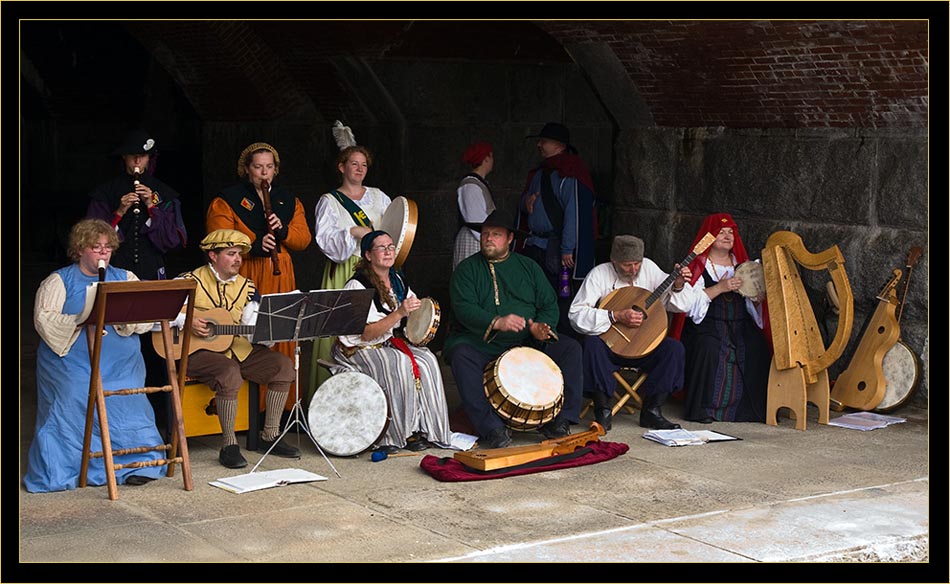
|
|
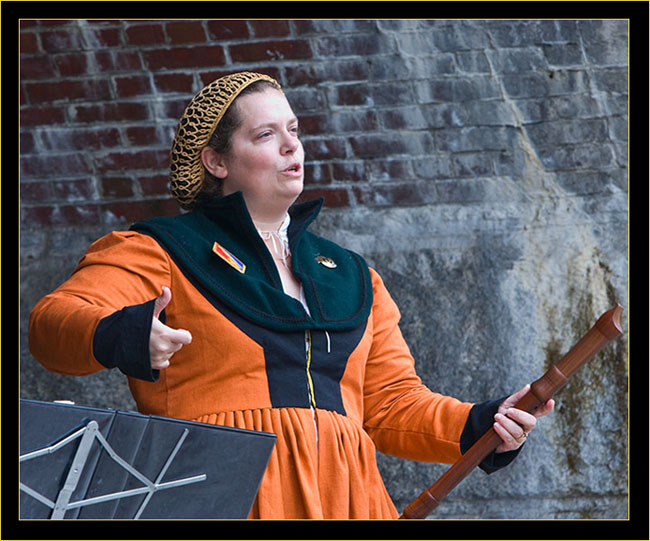
|
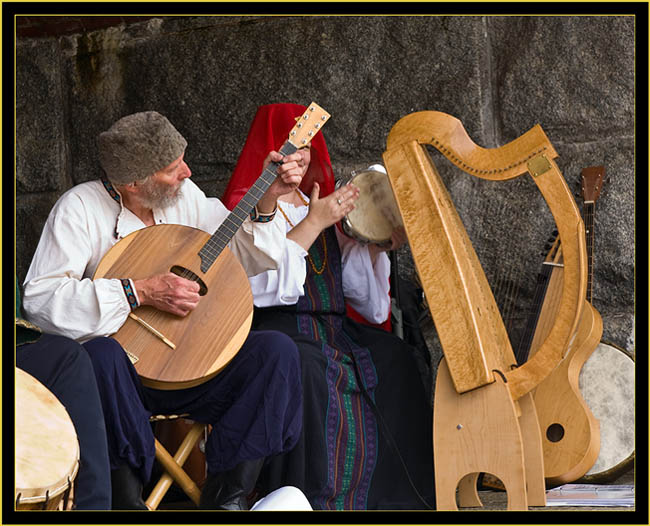
|
A Portion of the String Section...Canon 5d/24~105mm f/4L lens at 67mm; 1/60 second at f/8, ISO 400 |
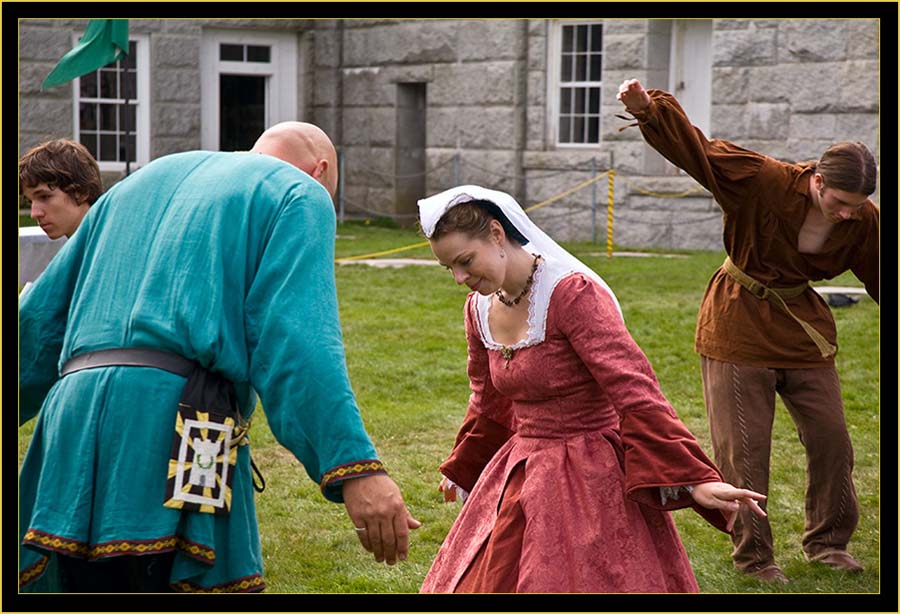
|
|
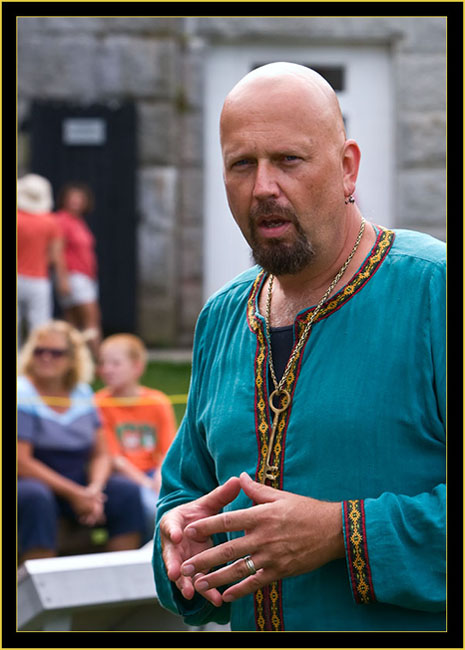
|
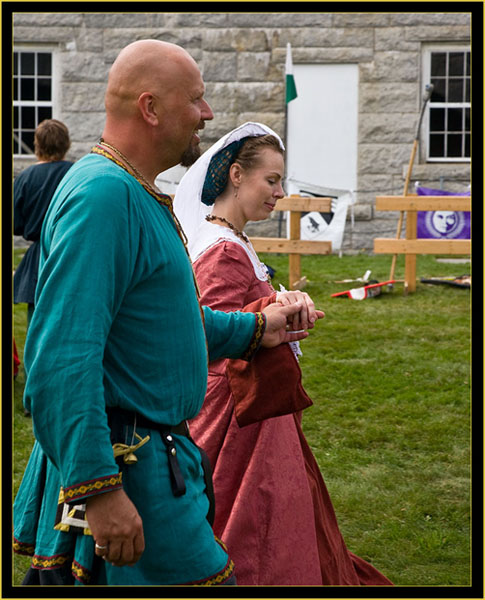
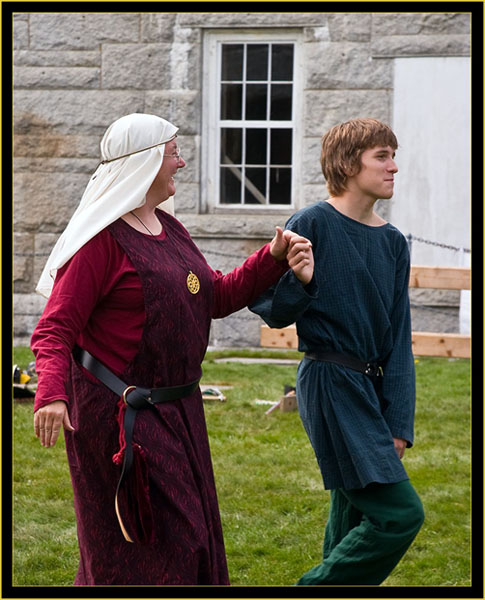
|
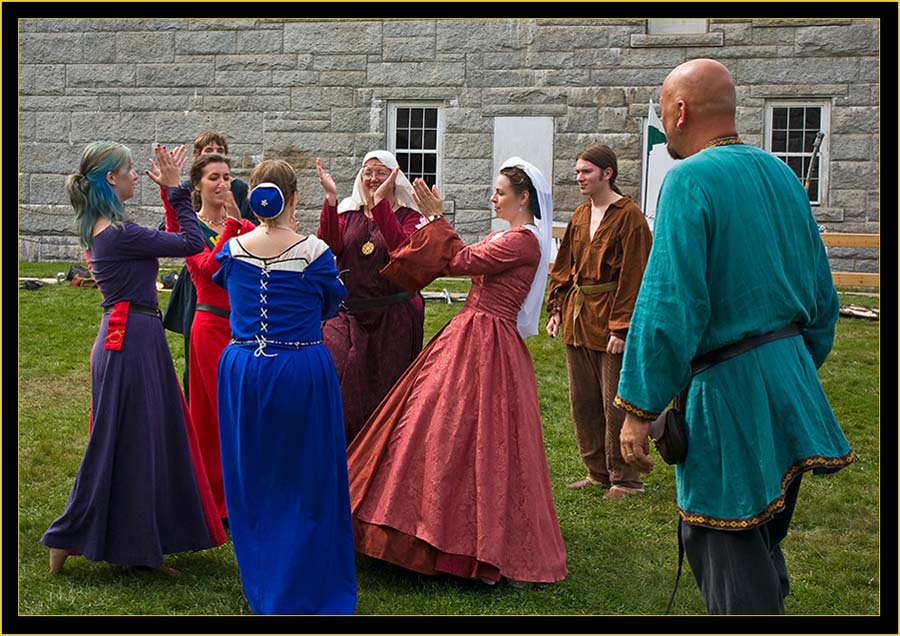
|
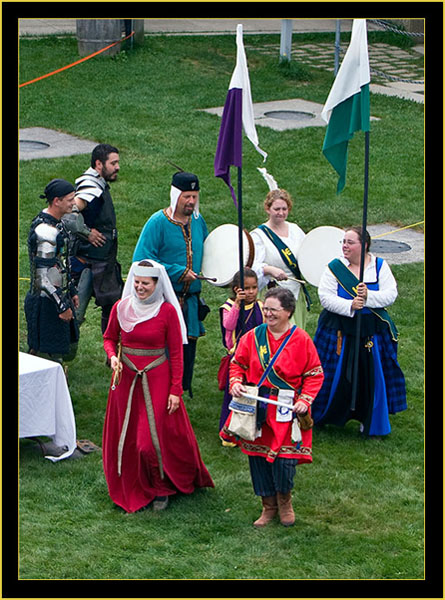
|
The Procession Entering the Parade Ground...It was getting on towards afternoon and beyond by now and probably the largest groups of public visitors were on the grounds to enjoy the proceedings. During some of the exhibitions on the parade ground I’d located myself on the upper deck looking down on the activities. From here I had a good vantage point and enough reach with my lenses to obtain a decent image scale on the participants. It was turning out to be a nice day and warming up some as the fog burned off. A procession was formed and the medieval folks involved with the heavy combat exhibition paraded in with pomp and ceremony to commence the Pas d’Armes Tournament of Knightly Combat… |
|
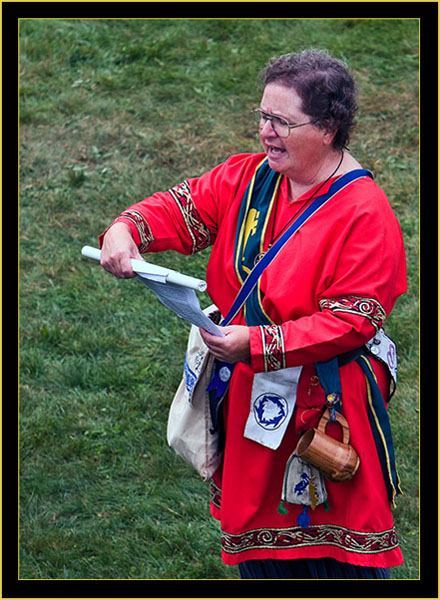
|
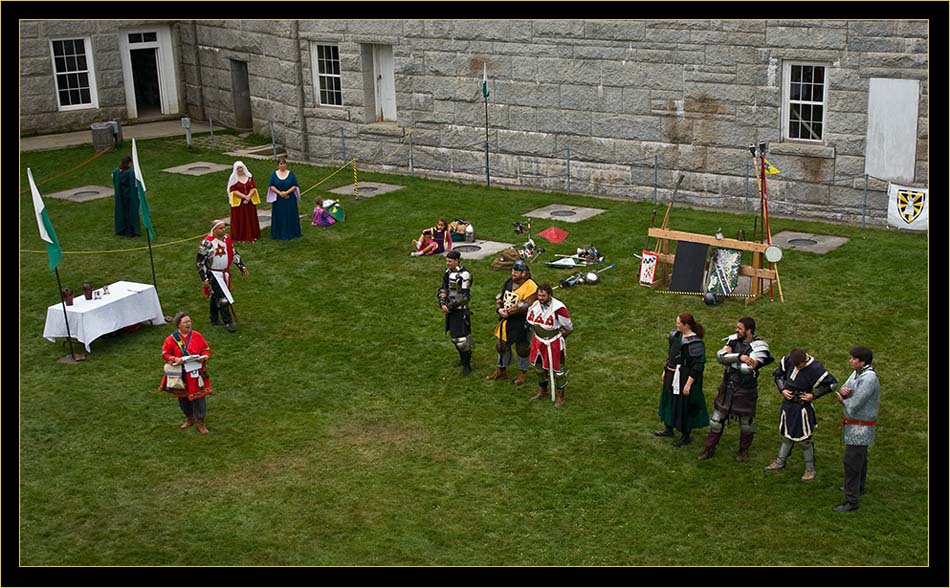
|
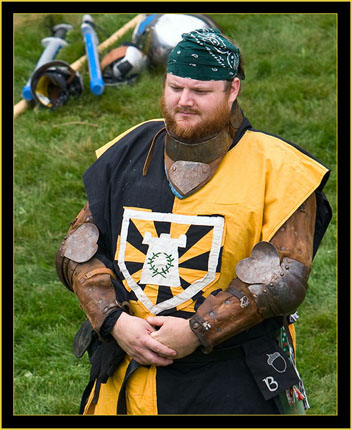
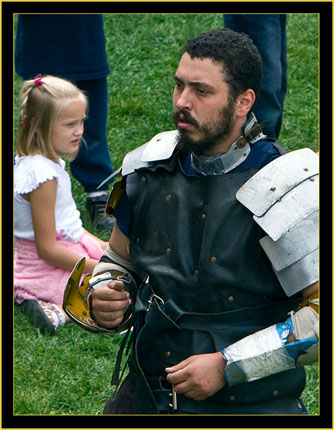
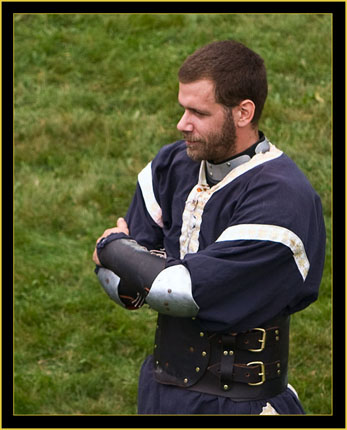
|
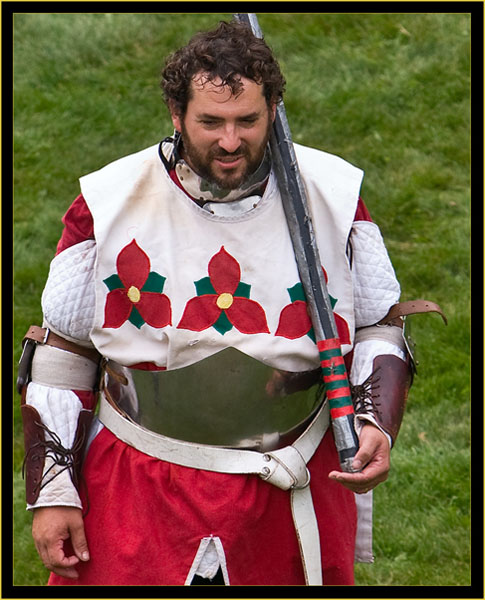
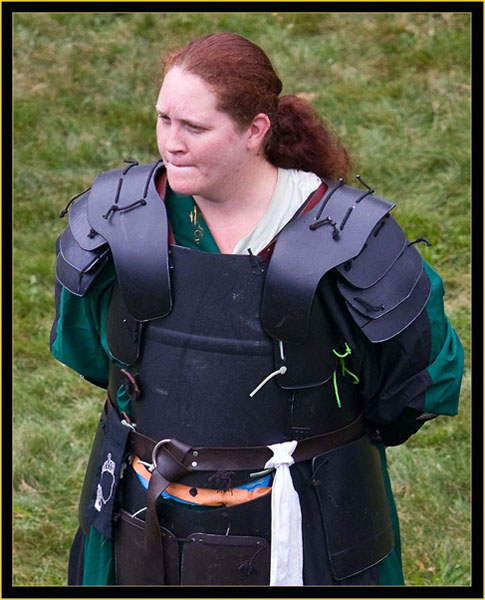
|
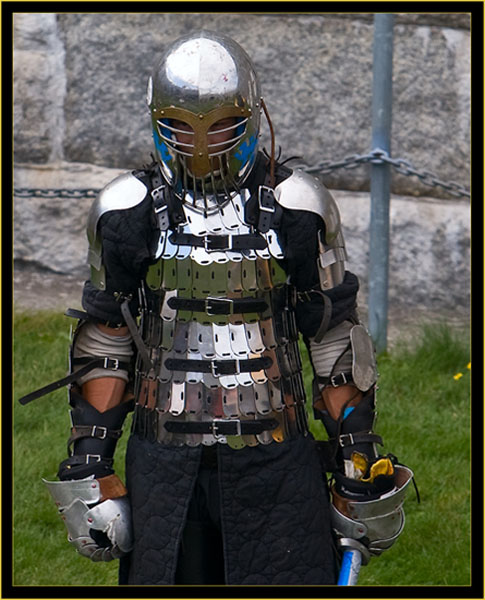
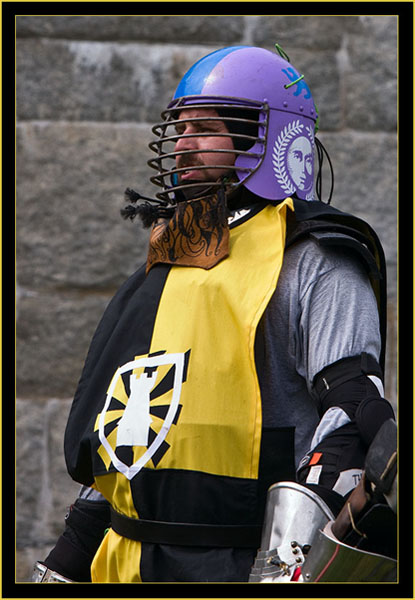
|
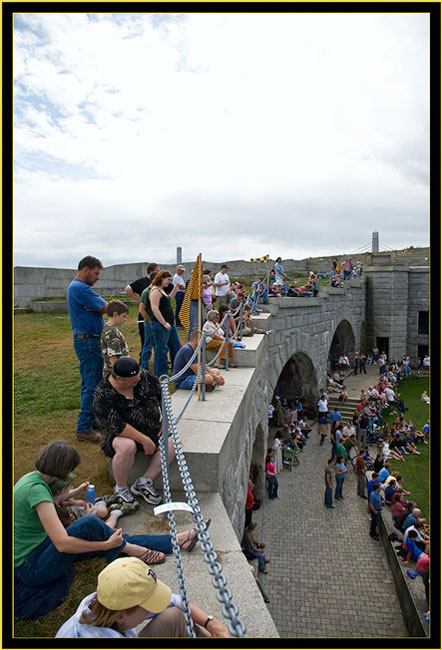
|
View from Topside...The spectators had all found acceptable vantage points to view the combat exhibition by now and anticipated the action soon to commence. I took this photograph from my observation point. It indicates the group of people above the action, the cobblestone ramp to the parade ground below and the Penobscot Narrows Observatory structure breaking the horizon at right of center. After a time I moved off the upper deck and by walking up the ramp was able to get nearly eye-level with the action, which offered a different perspective. This wasn’t as easy as one may assume – there were quite a few people bordering the scene of action and finding a spot to get a shot between the spectators and guidelines roping off the area presented a challenge. I’d spotted my friend Lord Justin on the field by now lately arrived. I also presumed that the The Valkyrie of Malagentia in her combat accoutrements, being the only woman prepared from combat, was his ‘significant other’. Canon 5d/24~105mm f/4L lens at 24mm; 1/800 second at f/8, ISO 400 |
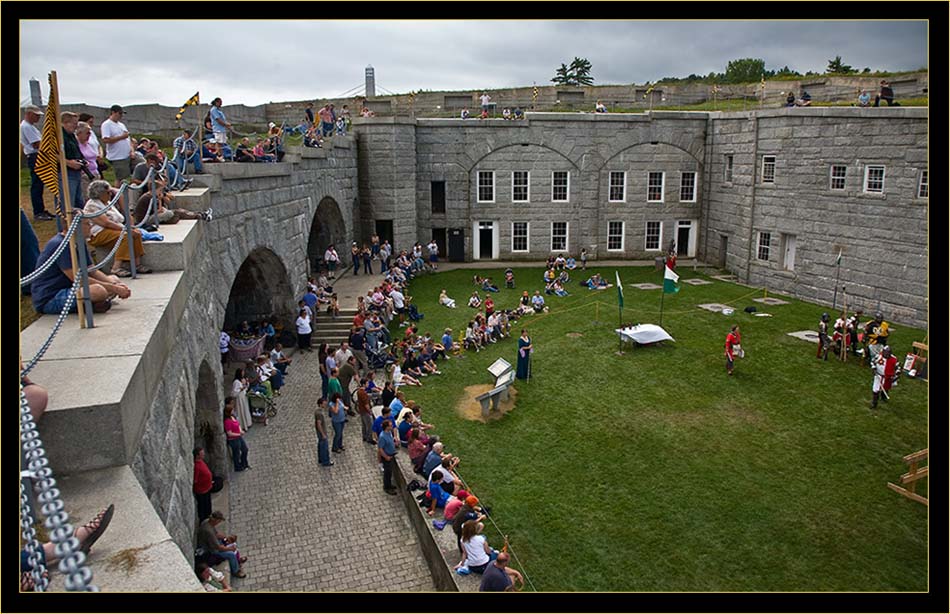
|

|
|
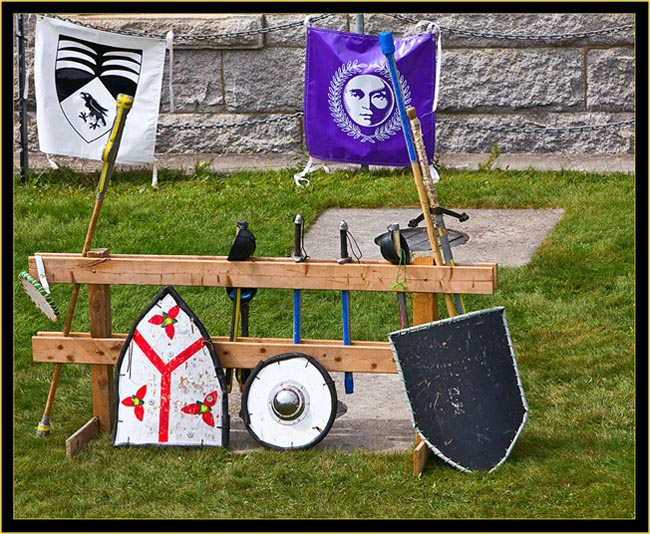
|

|
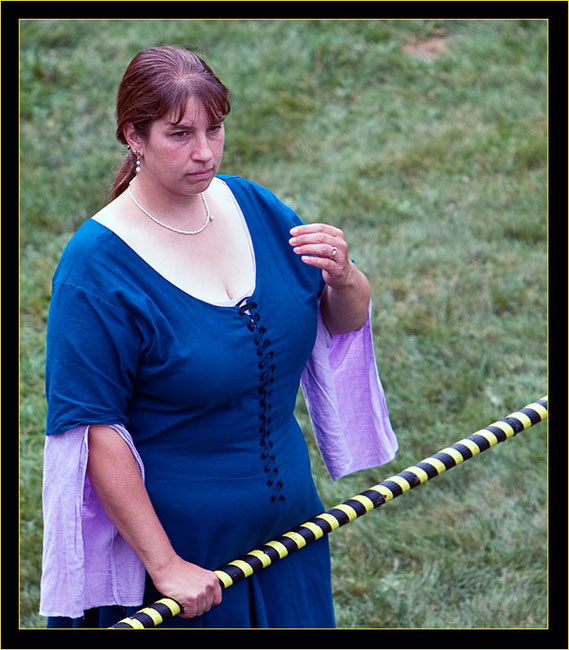
|
A Marshal on the Field...The SCA has strict protocols for combatants of all types within their organization. The obvious intent would be safety first and from what investigation I’ve done there is little that is not specifically addressed and detailed in their regulations. This can be anything from general behavior to weapons standards, armor requirements, acknowledgment of blows to combat injury procedures. Marshals on the field have been trained to oversee combat activities for the purpose of regulating safe procedures. Canon 1DS/70~200mm f/2.8L lens at 200mm; 1/1250 second at f/3.2, ISO 400 |
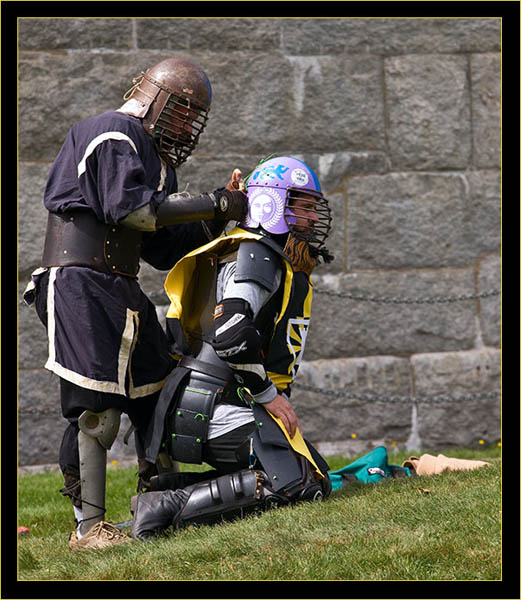
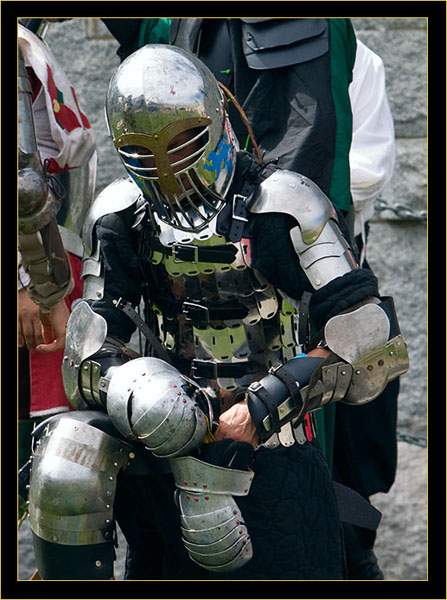
|

|
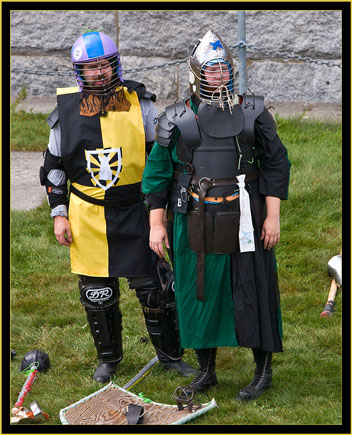
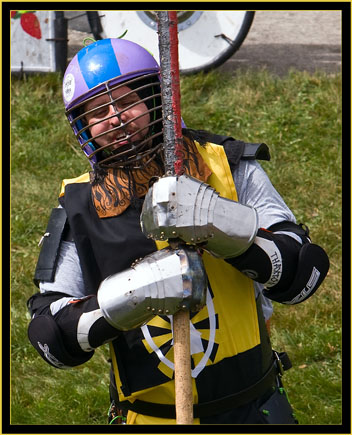
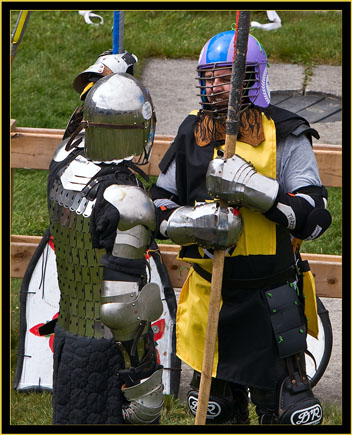
|
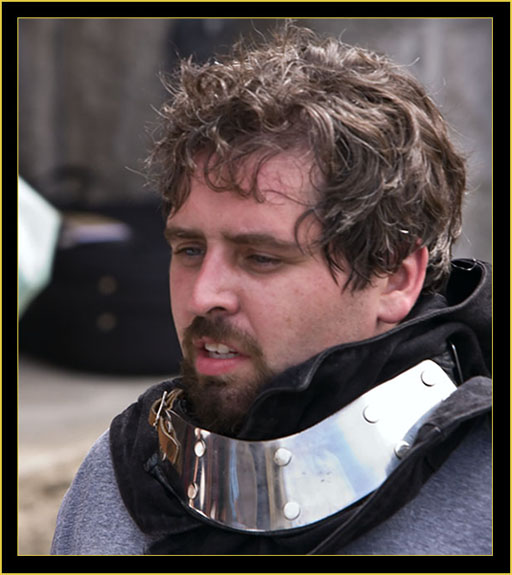
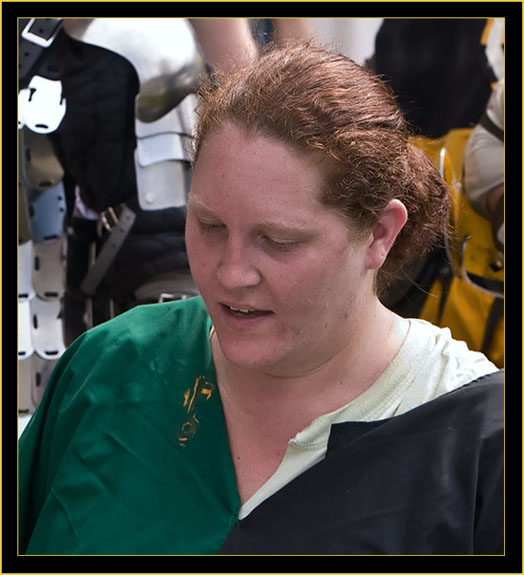
|
|
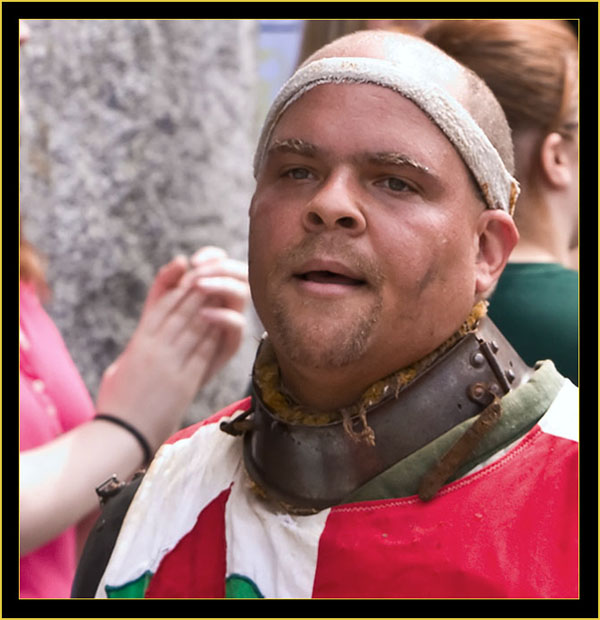
|
October 2008